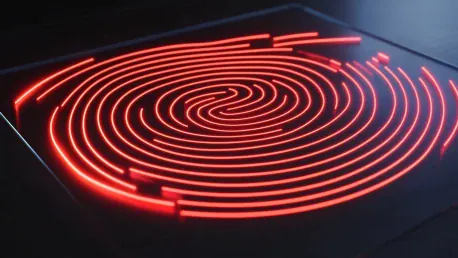In an age where cybersecurity threats are evolving and becoming increasingly sophisticated, traditional authentication methods are proving to be vulnerable. Passwords and PINs, once considered secure, are now easily targeted by cybercriminals through various tactics such as password cracking, phishing, and social engineering. The alarming frequency of data breaches illustrates the need for more advanced security measures. Recently, biometric authentication systems, like those developed by CardLab, have emerged as promising solutions to enhance online security. These systems employ unique fingerprint verification to effectively mitigate the risks associated with data breaches and account hacks.
1. User Enrollment and Setup
The initial phase of CardLab’s biometric authentication system involves user enrollment and setup. This step is crucial for ensuring that the biometric data is securely captured and stored. The user begins by registering their fingerprint directly on the card via the on-card fingerprint sensor. This process involves the user placing their finger on the sensor, which captures the unique fingerprint pattern. The captured biometric data is then securely stored within the card’s protected memory. The storage is designed to be tamper-proof, so the data cannot be extracted or copied.
One of the significant advantages of CardLab’s biometric card is that it does not require an internet connection for the enrollment process. This feature eliminates exposure to remote hacking attempts and side-channel attacks during the enrollment phase. Since the enrollment happens entirely offline, the biometric data remains isolated from potential cyber threats. This secure offline setup ensures that the fingerprint data is not vulnerable to interception, providing a strong foundation for subsequent authentication processes. The combination of secure storage and offline enrollment makes CardLab’s system a robust solution against evolving cyber threats.
2. Secure User Verification on the Card
Once the user’s fingerprint is successfully registered on the biometric card, the next phase involves secure user verification. When accessing an online service, such as cloud storage, a corporate intranet, or a banking portal, the user presents the card to a compatible NFC or Bluetooth reader. Upon detection, the system prompts the user to place their finger on the card’s fingerprint sensor for verification.
The card then compares the scanned fingerprint with the stored template. If the fingerprint matches, the card confirms the user’s identity internally. This entire verification step occurs offline, ensuring the biometric data never leaves the card. The offline processing of biometric data ensures that sensitive information is not transmitted over networks, further reducing the risk of interception or unauthorized access. By keeping the verification process isolated within the card, the system maintains a high level of security, protecting user identities against various cyber threats, such as man-in-the-middle attacks.
3. Authentication on the Backend
After the card verifies the user’s identity, it proceeds to the backend authentication phase. In this stage, the card generates a unique token or cryptographic signature specific to the authentication request. This token is then sent to the service provider for backend authentication, completing a secure passwordless login. During this phase, a connection to the authentication server is necessary to communicate the token.
The connection can be established via various methods, including contact chip, NFC, or Bluetooth. Alternatively, information displayed on the Defender card can be manually entered. CardLab’s QuardLock backend offers this Authentication as a Service. The tokenization of the authentication process offers significant security advantages. Unlike traditional password-based systems, the generated tokens are unique for each authentication request and cannot be reused. As a result, even if an attacker intercepts the token, it would be of no value for subsequent login attempts.
4. Replacing Vulnerable Password-Based Authentication
CardLab’s biometric verification and authentication system offer multiple advantages over traditional password-based authentication, highlighting a significant improvement in overall data security. Firstly, users no longer need to remember or enter passwords. This eliminates a common weakness in digital security – weak or reused passwords. With a biometric card, the user’s fingerprint acts as the key, and only the card and correct fingerprint together can grant access.
Even if an attacker were to steal a user’s laptop or smartphone, they would be unable to log in without the biometric card and the authorized fingerprint. Unlike password managers, which store and autofill credentials, the card itself acts as the sole verification tool. Additionally, in environments where smartphone use is restricted or prohibited due to espionage and security concerns, the card ensures that the user always has a login device at hand. By bypassing traditional passwords, CardLab’s solution addresses several shortcomings of password-based systems, effectively enhancing digital and physical security.
5. Physical Access and Multi-Use Security
Beyond digital access, CardLab’s biometric card is equally effective for physical security. The card can be integrated into existing building access control systems, ensuring that only authorized personnel enter restricted areas. When used for building access, the same biometric verification mechanism applies. The user must present the physical card and undergo fingerprint verification to gain entry. This dual requirement of the card and fingerprint adds a layer of security, making it significantly challenging for unauthorized individuals to bypass access controls.
Furthermore, organizations can integrate CardLab’s biometric cards into existing access control infrastructures without substantial changes. This straightforward integration ensures that businesses can enhance their security measures without incurring significant costs or disruptions. The multi-use capability of the card, providing both digital and physical access, demonstrates its versatility and value as a comprehensive security solution.
6. Protection Against Phishing and Credential Theft
Phishing and credential theft are persistent threats in the cybersecurity landscape. Traditional authentication methods that rely on user input are particularly susceptible to such attacks. However, the biometric card significantly mitigates these risks. Because it operates entirely offline during user verification, the biometric card does not expose credentials to phishing attempts. Even if an attacker tricks the user into visiting a fake login page, the card will not transmit reusable credentials.
Every login requires a new token to be generated and accepted, making it impossible for attackers to reuse captured credentials. Additionally, since authentication with the biometric card is cryptographically linked to the service being accessed, attackers cannot intercept or replay login data. Tokenized data generated by the card cannot be reused, rendering any intercepted data useless for subsequent attempts. This robust protection mechanism ensures that the biometric card substantially reduces the threat of phishing and credential theft.
7. Decentralized Security and Data Privacy
Centralized credential storage poses a significant risk, as a breach of the central server can expose all stored credentials. CardLab’s biometric card, however, employs a decentralized approach to security and data privacy. No biometric data is stored on external servers or transmitted during the verification process. This decentralized storage significantly reduces the risk of mass data breaches, as there is no central repository of biometric data to target.
The card operates independently of cloud-based authentication services. Even if the backend systems are compromised, unauthorized access remains thwarted. This independence safeguards user data from a broad range of potential cyber threats. Unlike SIM-based authentication methods, the biometric card cannot be hijacked via SIM swap fraud, an attack where an attacker takes control of a victim’s phone number. The offline and decentralized nature of the biometric card ensures higher levels of privacy and security for users.
Future of Secure Verification and Authentication
In today’s world, cybersecurity threats are constantly evolving and becoming more sophisticated, making traditional authentication methods increasingly vulnerable. Passwords and PINs, once considered bastions of security, are now easily exploited by cybercriminals using techniques like password cracking, phishing, and social engineering. The troubling frequency of data breaches is a testament to the urgent need for more robust security measures.
To address this growing concern, biometric authentication systems have gained attention as a promising solution for enhancing online security. Companies like CardLab are at the forefront of this innovation, developing systems that use unique fingerprint verification to significantly reduce the risks of data breaches and unauthorized account access. These advanced systems add an extra layer of security by relying on physical characteristics that are difficult for hackers to replicate or steal, greatly improving overall cybersecurity.
The shift towards biometric authentication highlights the continuous evolution of security strategies to counteract sophisticated cyber threats. By employing technology that leverages unique biological traits, these systems offer a more secure and reliable method of protecting sensitive information and personal data. As cybersecurity challenges grow more complex, the adoption of biometric solutions may very well become an essential standard in safeguarding digital identities and assets.









